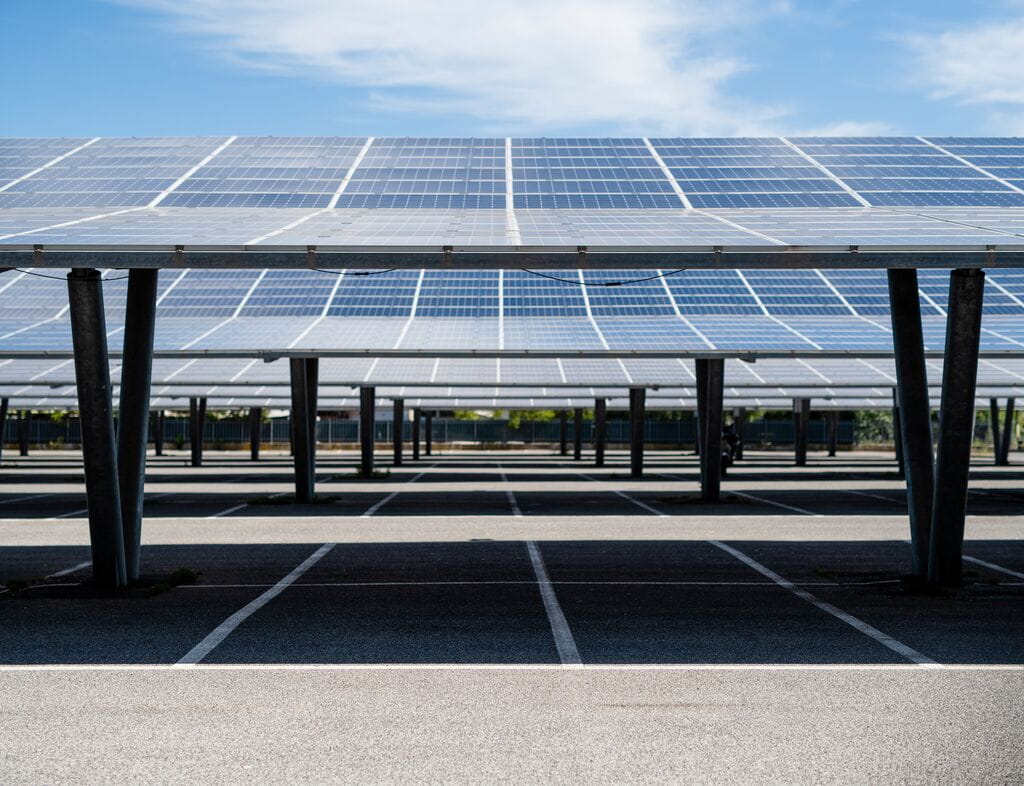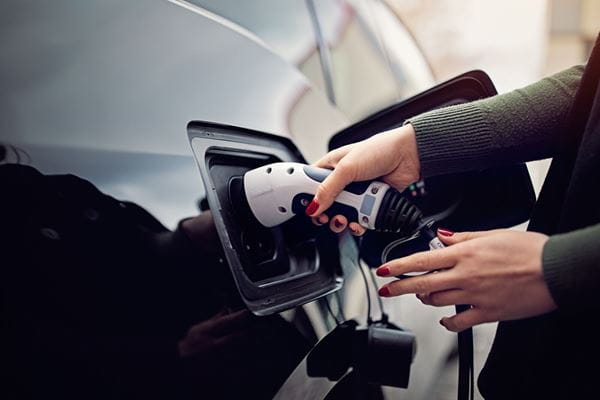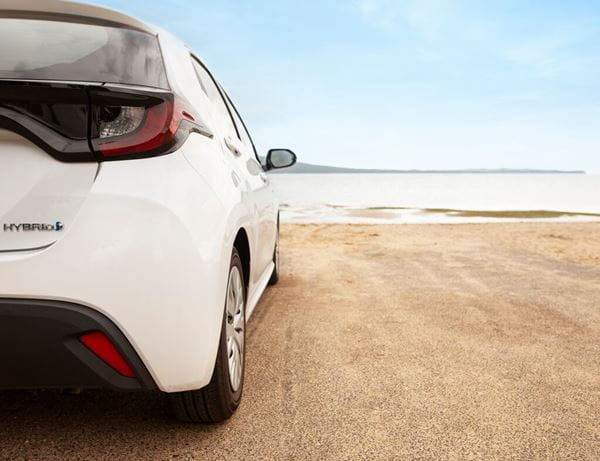
Is the grid ready for electric vehicle charging?
The UK’s electric vehicle population is growing quickly – but will plugging them in overload the electrical grid, and how green will that energy be?
How clean is the UK’s electricity supply?
Electric vehicles are only as clean as the energy they use, but the UK’s electricity supply is decarbonising quickly.
National Grid ESO, which is responsible for moving electricity around the country, is expecting the first periods of 100% zero-carbon energy supply by 2025[1] and we’re already close. A record of 87.6% was reached in January 2023, and renewables accounted for over half of energy generation last year[2]. Average CO2 emissions per kilowatt-hour (kWh) of energy have fallen from 529 grams in 2013[3] to 149 grams in 2023.
Unlike fuel-burning cars and vans, that growing share of renewables means electric vehicles become progressively less carbon-intensive to drive over the course of a three or four-year lease. An electric family car returning 3.5miles/kWh would have CO2 emissions equivalent to just 26g/km in 2023 (including electricity generation and distribution) and only 1% of that energy would have been produced by burning coal.
That’s six times less CO2 than the tailpipe emissions of an equivalent petrol or diesel car (which don’t include extracting, refining and transporting the fuel) and an EV can be lower still. In September 2023, the grid recorded a record low carbon intensity of 27g/kWh, equivalent to 5g/km for that same example vehicle.
How will the grid cope with increased demand from electric vehicles?
A common concern about electric vehicles is the effect of drivers returning home and charging early in the evening, when demand is already at its highest. However, peak demand has fallen significantly – from a record 62GW in 2002[4] to 44GW in 2023[2] – due to more efficient appliances and businesses and households adding solar panels, and work is underway to reduce those spikes even further.
This relies on a smarter grid. The UK’s ‘Ten Point Plan for a Green Industrial Revolution’ includes planned facilities to store excess renewable energy and release it when demand is at its highest[7]. This reduces the need for fossil fuels a backup, which is what happens today, and electric vehicles are expected to play an active role in this ecosystem too.
Grant funding for home and workplace chargers already requires units to be capable of exchanging usage data anonymously, slowing or deferring charging according to demand (if drivers opt in)[6, 7] to reduce the need for additional power plants.
By 2050, National Grid ESO’s latest Future Energy Scenario report predicts up to 83% of drivers will use smart charging for their vehicles, and 45% will have vehicle-to-grid (V2G) technology – effectively turning them into reserve energy storage[8]. Combining these features could add an additional 48GW of flexibility to the grid, the report says[9] and would enable EV drivers to earn money by selling energy back to utility companies.
Octopus launched the UK’s first V2G tariff in April 2024, claiming £850 annual savings for drivers[10] but only a handful of vehicles are compatible. V2G services tend to require vehicles to use the CHAdeMO charging standard, most common on the Nissan LEAF and Nissan e-NV200. The CCS connector used by most new electric vehicles sold in Europe does not have the communication protocol required for V2G yet[11].
How can I minimise by electric vehicle’s carbon impact?
Small behaviour changes can make a big difference to your electric vehicle’s CO2 emissions, and could save money too. Here are some simple steps:
- Get a Smart Meter: The UK Government is offering smart meter upgrades for every household in England, Scotland and Wales, and they’re an important component of a cleaner energy system. They provide a live display of energy consumption for users, while automating the billing process and generating data which can inform wider integration of renewables into the grid. Installation costs are included within your energy bills and upgrades can be requested here.
- Watch the Grid: Grid carbon intensity varies by region and the time of day, as increased demand relies on a larger share from non-renewable sources. To help consumers understand those fluctuations, National Grid ESO has a live calculator which tracks and predicts CO2 emissions and suggests the best times to plug in. It’s available as a free app for Apple and Google devices, and at carbonintensity.org.uk
- Change Your Tariff: The lowest-carbon electricity can also cost less. Switching to a Dual Rate tariff introduces much cheaper unit costs (per kWh) for charging overnight, when demand on the grid and CO2 emissions from generation are lowest. Several utility companies also offer specific tariffs renewable energy.
- Plan Your Charging: All new chargers and most plug-in hybrid and electric vehicles have a feature enabling charging to be scheduled for off-peak tariffs or periods when grid carbon intensity is at its lowest. This could help mitigate demand spikes and reduce running costs for drivers too.
REFERENCES:
[1] National Grid ESO. (n.d.). Zero-carbon explained. [online] Available at: https://www.nationalgrideso.com/electricity-explained/zero-carbon-explained [Accessed 17 Jul. 2024].
[2] National Grid ESO. (n.d.). Britain’s electricity explained: 2023 review. [online] Available at: https://www.nationalgrideso.com/news/britains-electricity-explained-2023-review [Accessed 17 Jul. 2024].
[3] National Grid ESO. (2021). Record-breaking 2020 becomes greenest year for Britain’s electricity. [online] Available at: https://www.nationalgrideso.com/news/record-breaking-2020-becomes-greenest-year-britains-electricity [Accessed 17 Jul. 2024].
[4] National Grid Group. (n.d.). 5 Myths about electric vehicles busted. [online] Available at: https://www.nationalgrid.com/stories/journey-to-net-zero/5-myths-about-electric-vehicles-busted [Accessed 17 Jul. 2024].
[5] Department for Business, Energy and Industrial Strategy. (2020). The Ten Point Plan for a Green Industrial Revolution (HTML version). [online] Available at: https://www.gov.uk/government/publications/the-ten-point-plan-for-a-green-industrial-revolution/title [Accessed 17 Jul. 2024].
[6] Office for Zero Emission Vehicles (OZEV). (2023). Electric Vehicle Homecharge Scheme: minimum technical specification. [online] Available at: https://www.gov.uk/government/publications/electric-vehicle-homecharge-scheme-minimum-technical-specification/electric-vehicle-homecharge-scheme-minimum-technical-specification [Accessed 17 Jul. 2024].
[7] Office for Zero Emission Vehicles (OZEV). (2024). Workplace Charging Scheme: guidance for applicants, chargepoint installers and manufacturers. [online] Available at: https://www.gov.uk/government/publications/workplace-charging-scheme-guidance-for-applicants-installers-and-manufacturers/workplace-charging-scheme-guidance-for-applicants-chargepoint-installers-and-manufacturers [Accessed 17 Jul. 2024].
[8] National Grid ESO. (2024). Future Energy Scenarios: Pathway Assumptions 2024 [online] Available at: https://www.nationalgrideso.com/document/322826/download [Accessed 17 Jul. 2024].
[9] National Grid ESO. (2024). Future Energy Scenarios: ESO Pathways to Net Zero. [online] Available at: https://www.nationalgrideso.com/document/322316/download [Accessed 17 Jul. 2024].
[10] Octopus Energy. (2024). Cash In: Green drivers go free with Octopus' latest smart tariff. [online] Available at: https://octopus.energy/press/Cash-In-Green-drivers-go-free-with-Octopus-latest-smart-tariff/ [Accessed 17 Jul. 2024].
[11] CharIN. (2021). Vehicle to Grid (V2G). [online] Available at: https://www.charin.global/news/vehicle-to-grid-v2g-charin-bundles-200-companies-that-make-the-energy-system-and-electric-cars-co2-friendlier-and-cheaper/ [Accessed 17 Jul. 2024].
Important information:
This blog was originally published on leaseplan.com website. The views expressed may no longer be current and any reference to specific vehicles or products is for reference only. This information is not a personal recommendation for any particular vehicle, product or service - if you are unsure about the suitability of a product, you should consult with an expert.



